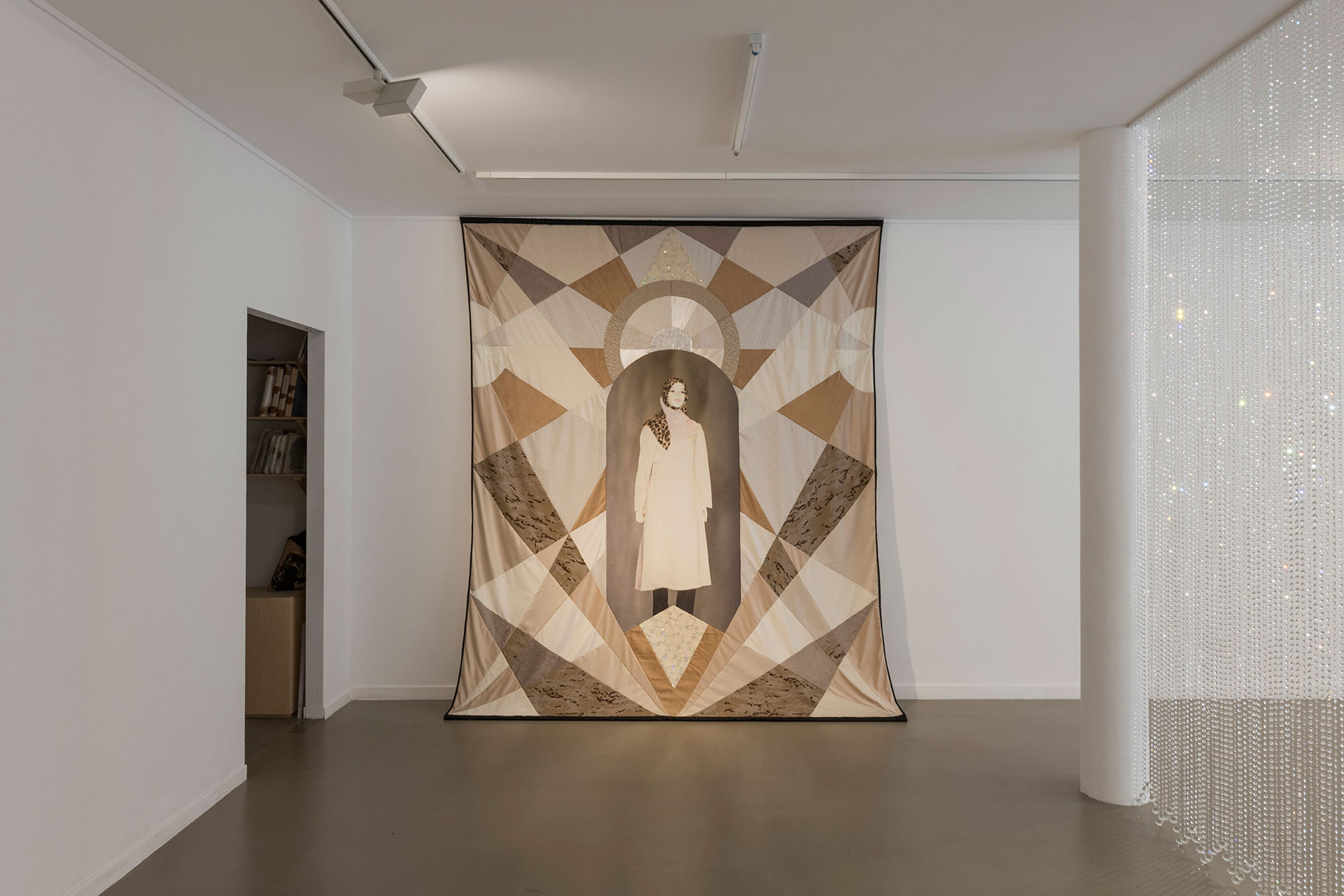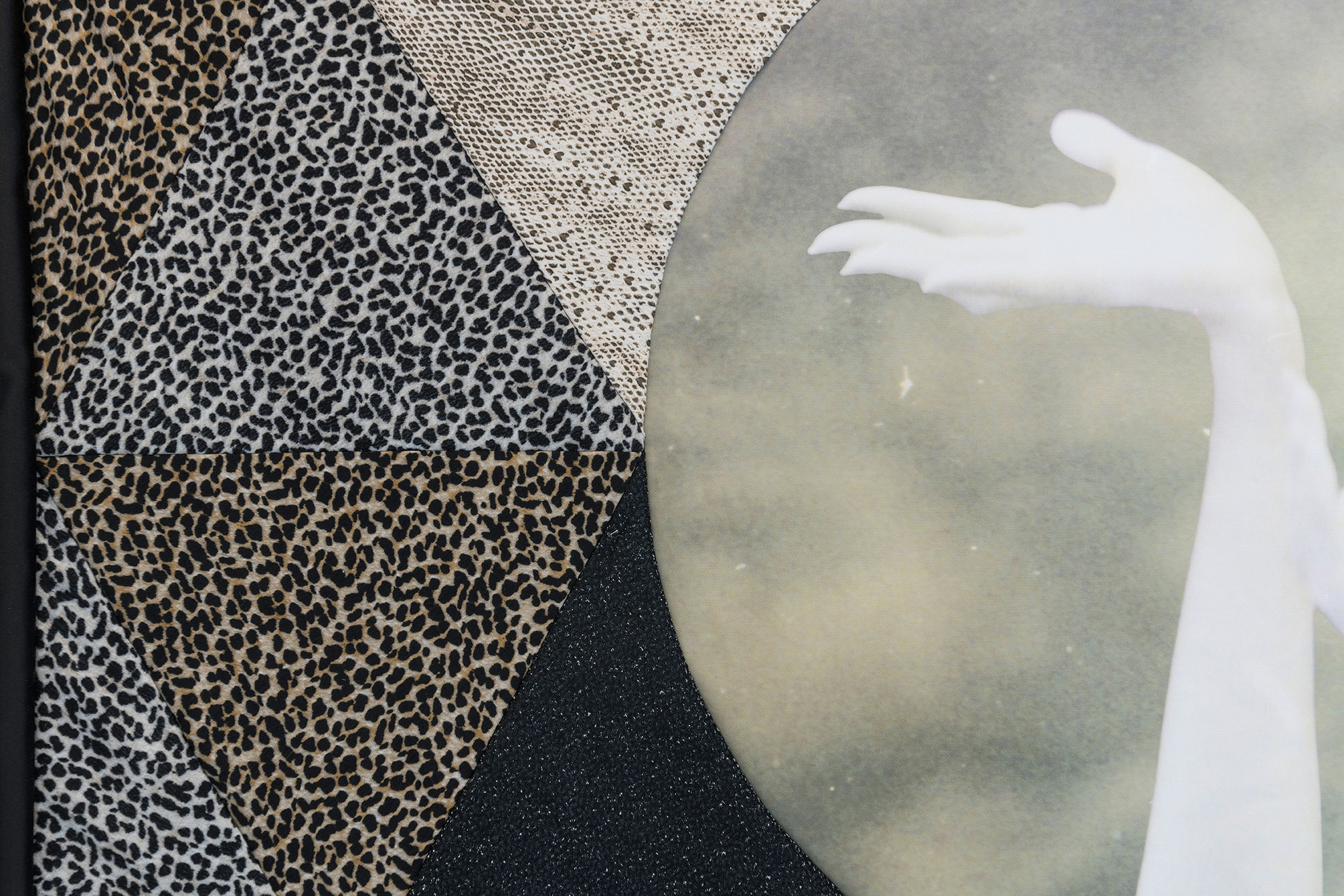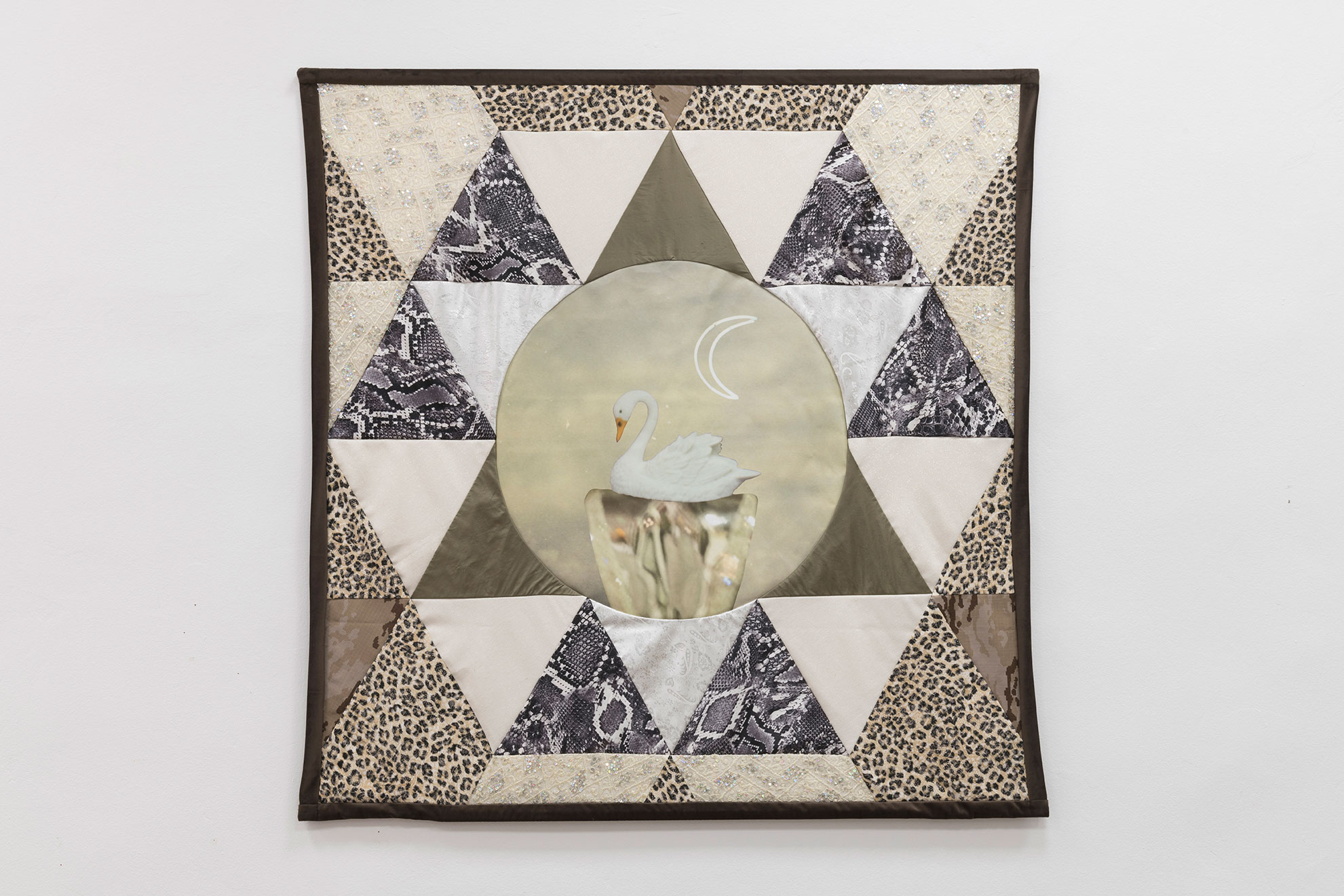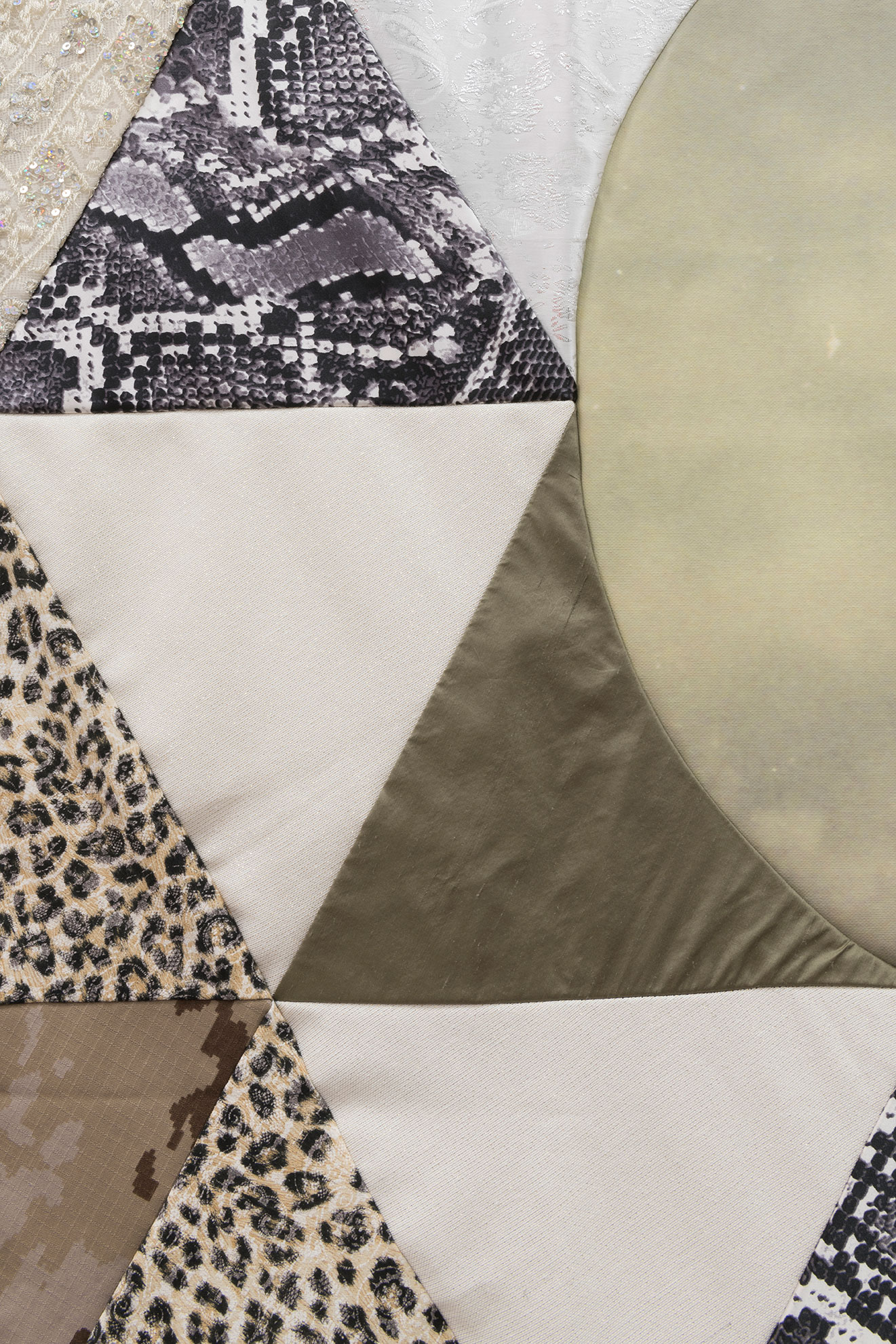26 November – 22 January 2022
Barcelona
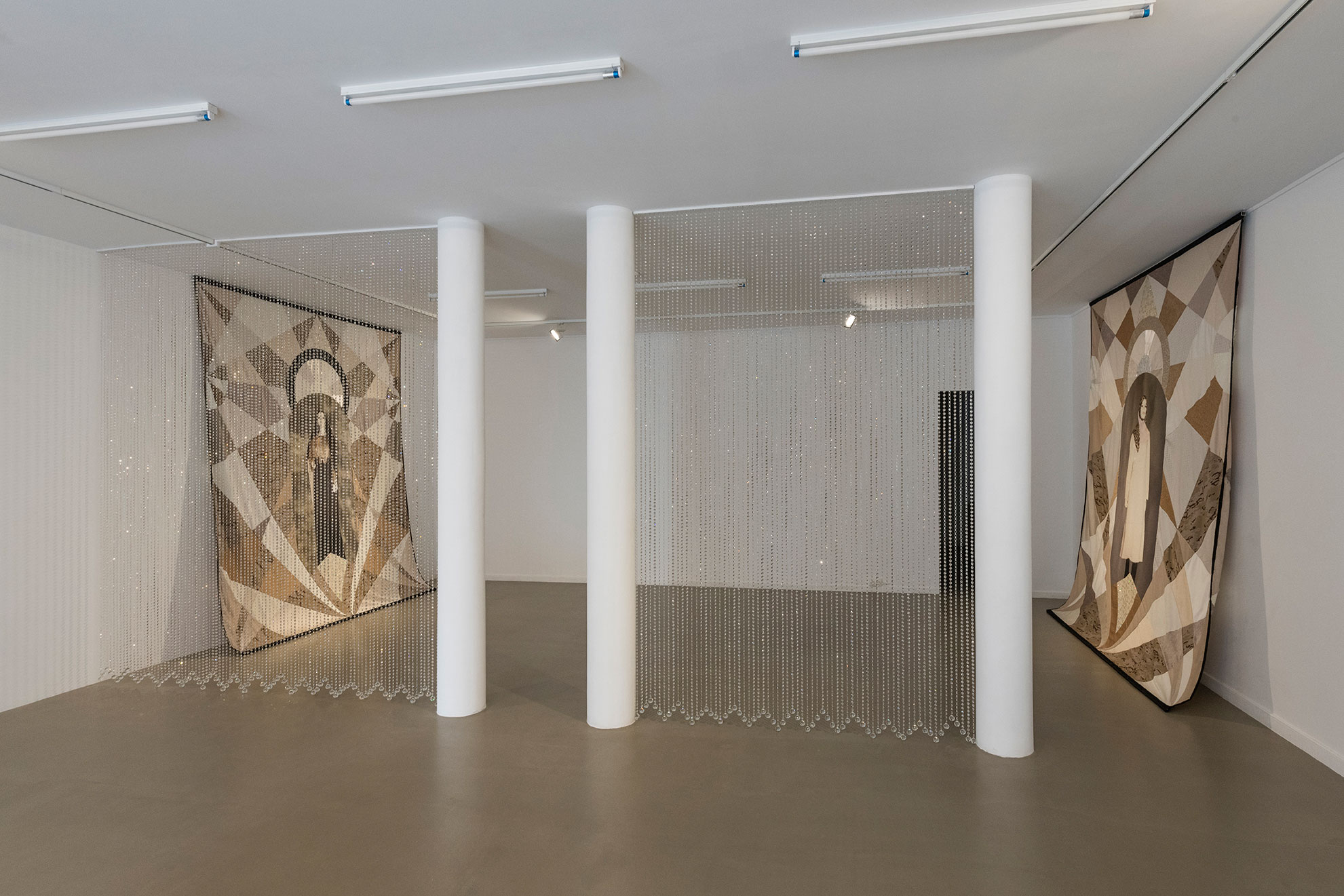









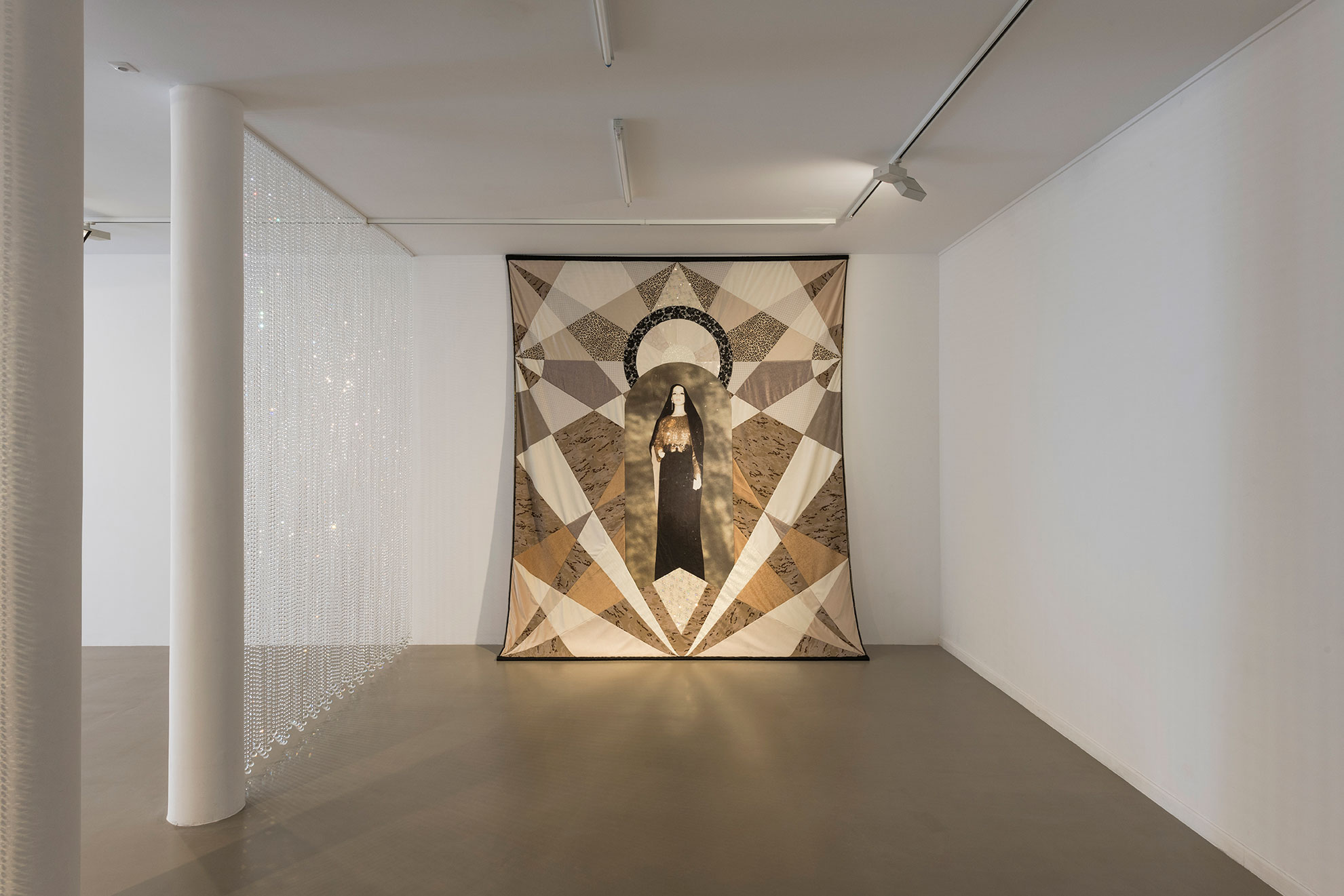
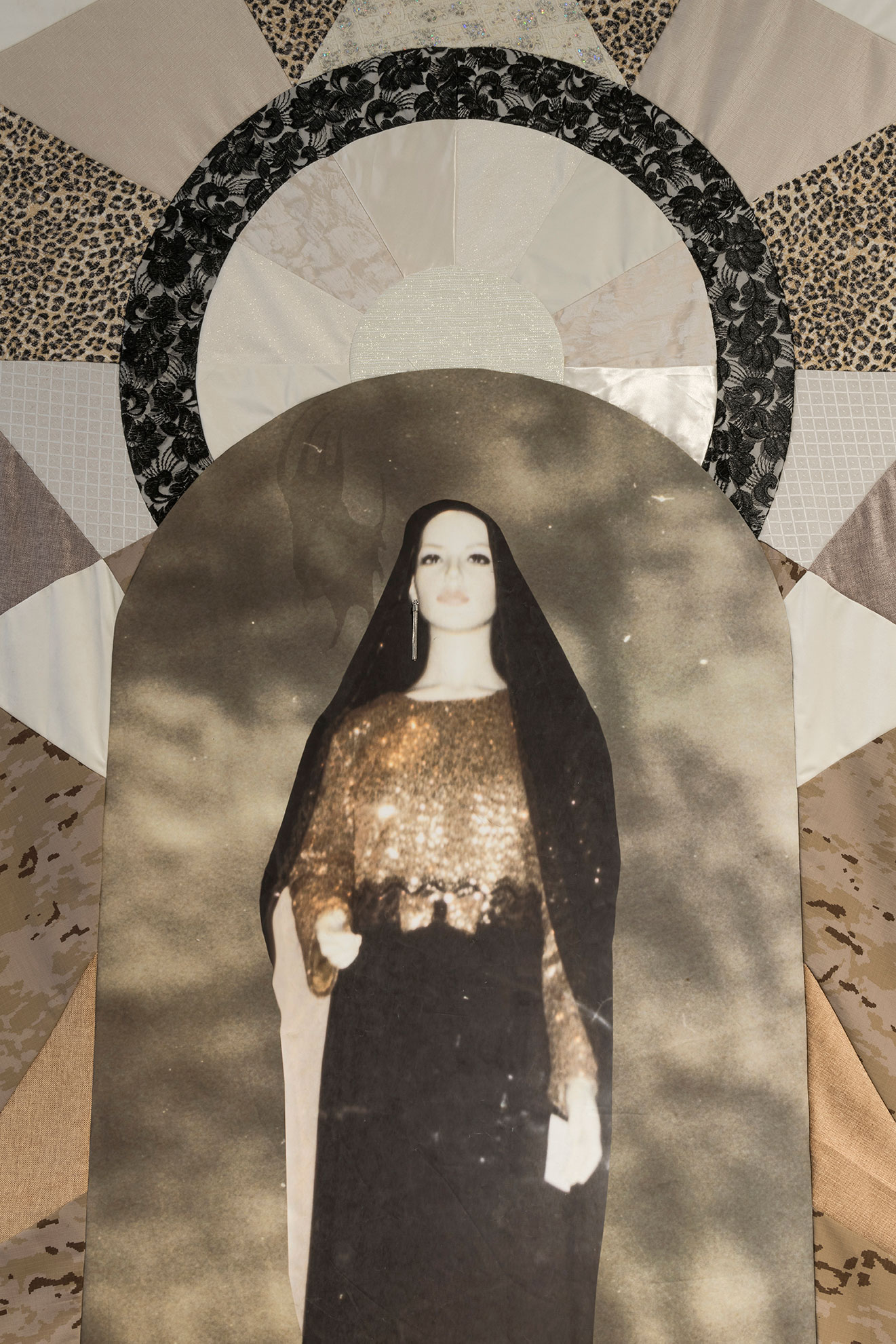

When Unica Zürn wrote Dark Spring, the vision of a female body was constructed via multiple contradictory positions: the author writes in the third person about her suicide which later materialized IRL — the so called Real Life — applying an uncannily similar modus-operandi. Questioning the inception of this mirroring would lead us to the Heideggerian loop about the origin of the work of art, after all, there is a lot of play (Spiel) in a mirror (Spiegel), in this particular case, a Lil mirror (Spieglein), as suggested by the poetically archaic german suffix “lein” generally used for cute, harmless, often feminine things.
Spieglein, Spieglein (mirror, mirror) thematizes the relationship between mystification and marginalization of the female as a central theme. Through her work, the artist offers a gaze through a looking glass that does not attempt to demystify but rather to convert supposed weaknesses into elated pride. Both the choice of material and the imagery used for Spieglein, Spieglein is directing the viewer to stereotypical (gender-specific) associations that serve to bring vulnerability and strength into an analogy.
The strands of crystal beads, commonly used for wedding decoration, act as seductive veils that disperse the light into colors and give the exhibition space a ceremonial spirit. The fact that they were bought on a Chinese website (Alibaba), after being unsuccessfully researched locally, is a symptom of the ever growing reliance on supply-chains and the continuous mirroring of Western industrial models to countries where (often female) labor-force is abundant and cheap. The type of objects sold in these internet platforms are tightly related with the domestic sphere, a space frequently associated with feminine immanence: clothes, house-hold appliances, kitchenware, decorative objects and fake designer bags.
Cultural reorientation often leads to the development of an ideology or demonology directed against perceived menaces such as rival movements and deviant groups, and generally results in scapegoating and persecution. Silvia Federici argues in her book Caliban and the Witch that the witchhunt was a significant step towards pushing women to the edge of society and thus enabling the exploitation of their work force by a soon-to-come capitalist system. Historically, the female (worker) has been excluded of the sphere of socially recognized work and has instead been forced to carry out labour of the lowest status with little or no payment (i.e. textile industry, prostitution, domestic work..marriage). Still today the idea of the female is being denounced as irrational, esoteric, emotional, hysteric and so forth – these disparaging preconceptions have the consequence that people who claim these attributes for themselves are being discredited. In an eerie way, Spieglein, Spieglein, fosters a play with the possibilities of a “safe space”, a sort of mirror universe in which the holy whore or witch is being celebrated rather than condemned.
Framed by kaleidoscopic textile works that juxtapose fabrics with prints of animal skins (e.g. snakes) and those for wedding ceremonies, the portholes at the center of the cloths display collages of analogue photographs of obscure shop window scenes overlaid upon natural motifs that evoke dreamlike sequences – fragmented and blurred. The clothes are a puzzling blend of quasi-religious symbolism and soviet suprematism. Sewed by the artist herself in her studio located in the north of Portugal, a region with a strong historical connection to the textile industry, the act of sewing seems to survive scarcely as local DIYism, while the portuguese industry is mostly displaced towards the far-east.
Accross the globe, textile work, alongside prostitution, have been the two crafts most notoriously associated with women, so the act of making a set of works embeding references to these as contemporary art objects feels like a sardonic play with the Male Genius, a category that has allegedly excluded women from the high ranks of intelectual and creative labor for centuries and dominated most of art history, peaking at the modernist model, now being contested ad-nauseum by a fervent woke-culture.
The collages have an epic fairy-tale feel to them, a surrealist blend that feels organic to the point of suspending disbelief. The circular portlights are highly evocative of the windows from the Solaris station depicted in Tarkovsky’s film, the planet where all incoming astronauts were haunted by the embodied mirrors of their memory, defied by the incomprehensibility of the Planet’s only living organism, a dense gel-like Ocean whose purpose and ontology remained unknown, completely impenetrable, despite all attempts at scientific research by the on-board scientists. In the Snow White fairy-tale, the Prince kisses a comatose woman to save her from death, but in Solaris the exact opposite happens: it is Hari, a dead woman, that kisses a living Man to save him from the so-called Real Life. Trapped in the mirror of the mind, the nuclear power over the Ocean sets them free. But when given the choice to go back to Earth, Chris chooses to stay, arguing that “all simple and human truths have its mysteries. They are the essence of life. The mysteries of Happiness, of Death and of Love”.
Text by Sandralub & Abraham Winterstein
____________________________________________________
Alisa’s practice includes sculpture, photography, textile works and performance – often accompanied by non-visual and immaterial elements such as smell and sound – enfolding in immersive dreamlike installations. Traces of mysticism and psychoanalysis can be found throughout her work. Her interest applies the correlation between superstition, its symbolism and outdated consumerism (i.e. shop windows).
Alisa Heil (Germany 1986) lives and works in Porto, Portugal. She studied at Central Saint Martins, London, at Bauhaus University, Weimar and at The School of the Art Institute of Chicago for which she received a Fulbright Scholarship. Solo exhibitions include Spieglein, Spieglein at Bombon Projects, Barcelona, 2021; Planet Der Sirenen at Nuno Centeno Gallery, Porto, 2020; American Cream at Julius Caesar Gallery, Chicago, U.S., 2016 and Presente Invasivo at A Certain Lack of Coherence, Porto, Portugal, 2014. A selection of group exhibitions, performances and screenings include Hex Hex (with André Sousa), Complexo Colosso, Centro internacional das Artes José Guimaraes, Portugal, 2021; I was thought product of emptiness of space, Bienale de Arte contemporanea de Maia, Portugal, 2021; Os Conviventes, Galeria Nuno Centeno, Porto, Portugal, 2021; Orpheus II (duo with Mauro Cerqueira), Via Aberta – Mota Galiza, Porto, Portugal, 2018; Onda Podre / Rotten Wave, Twenty Years, Berlin, Germany, 2018; Sad Movie, Kunsthalle Freeport, Bangkok, Thailand, 2018; Cum-Ex, Ausstellungsraum der IG Metall, Berlin, Germany, 2017; Manual Memory Management Act I (performance), Manifesta 11, Zurich, Switzerland, 2016 among others. In 2017 she founded the curatorial project Kunsthalle Freeport, a mobile and independent exhibition platform currently based in Porto.
Read More